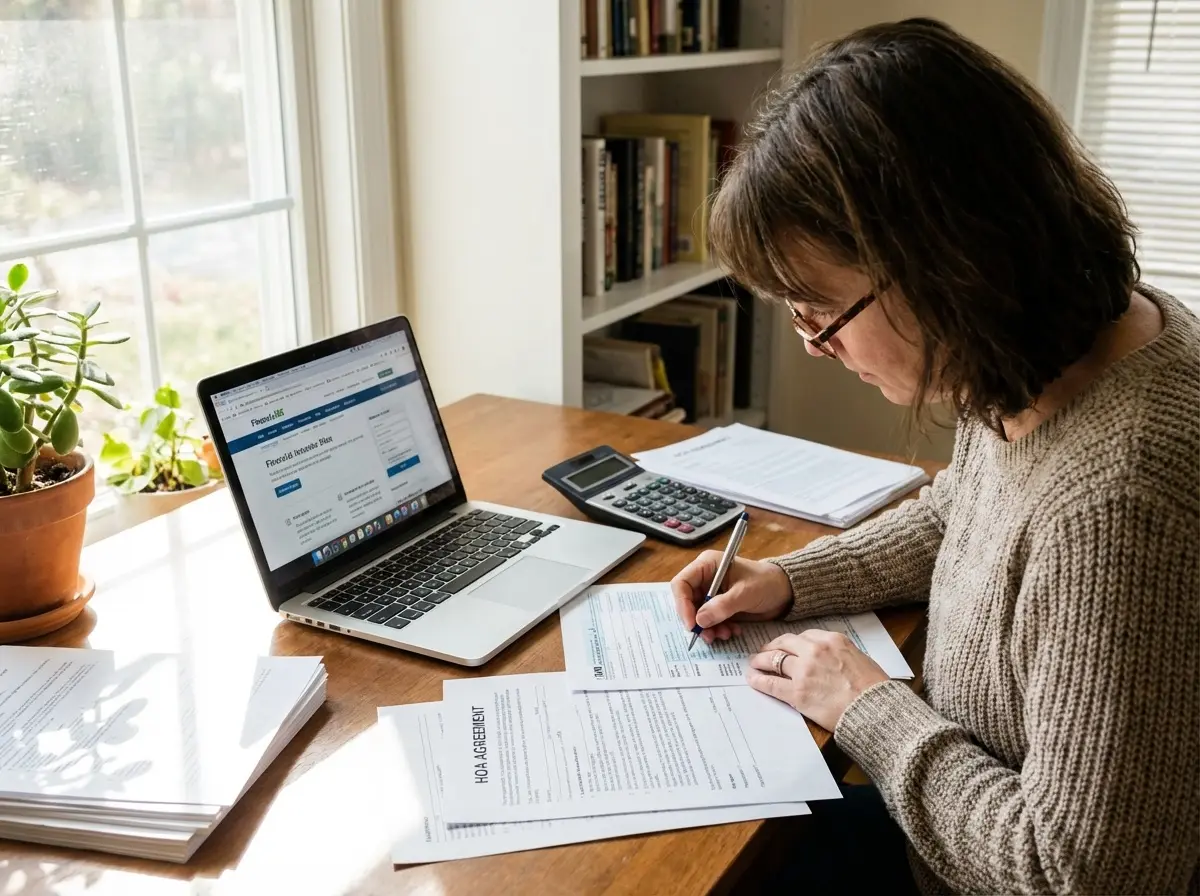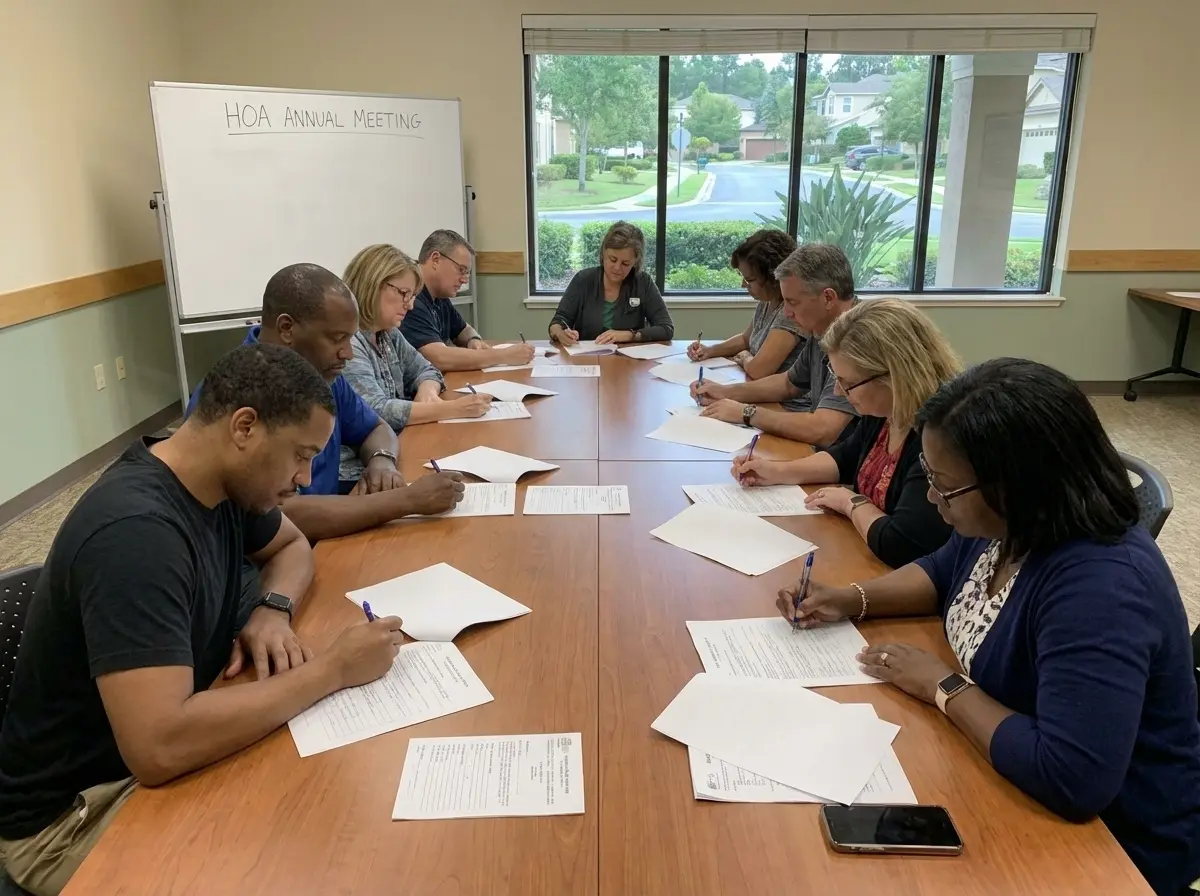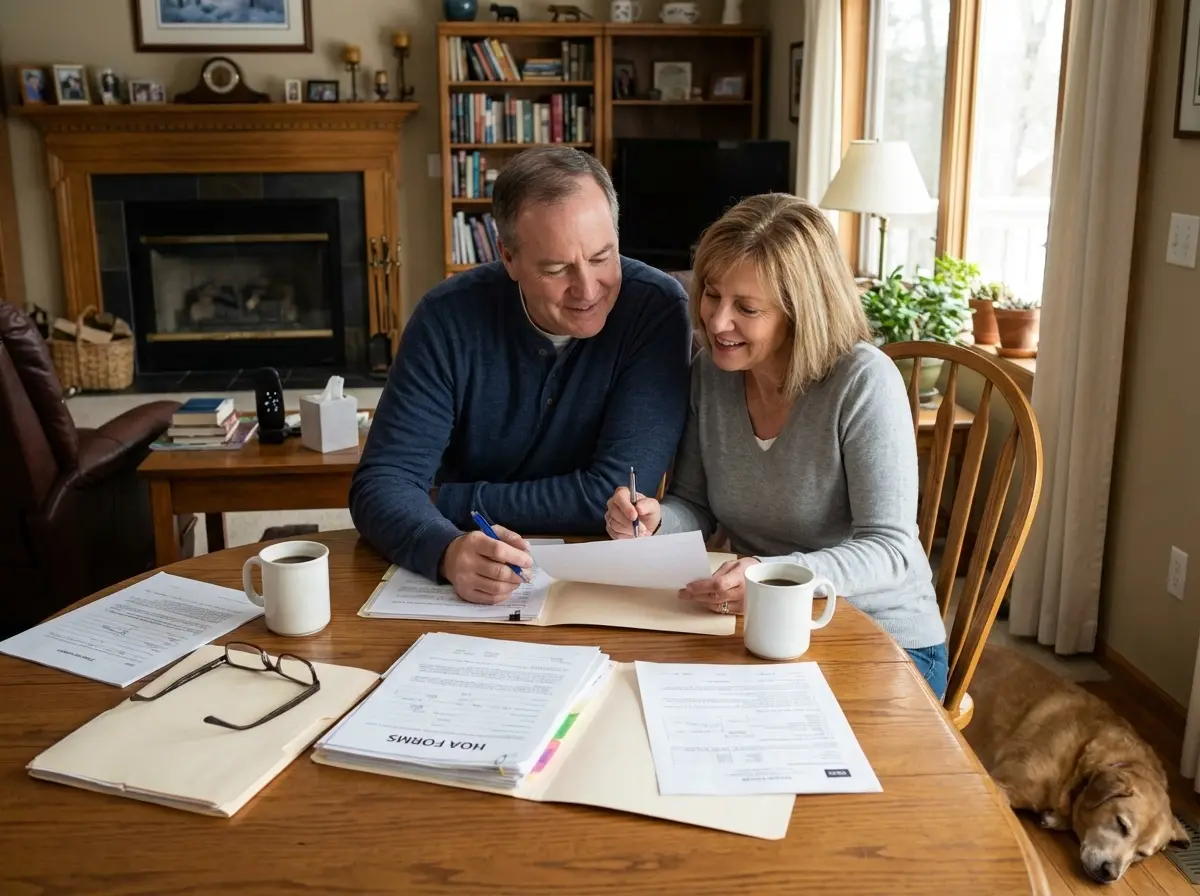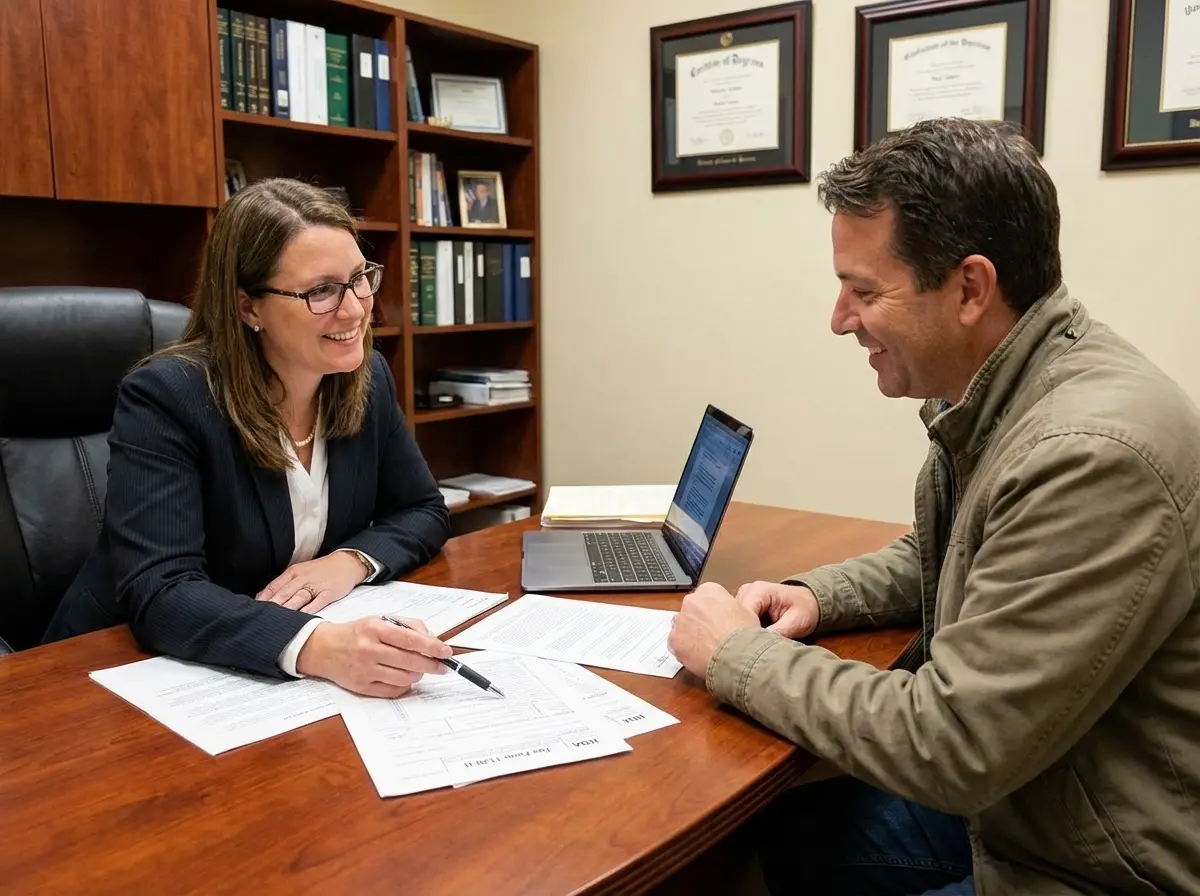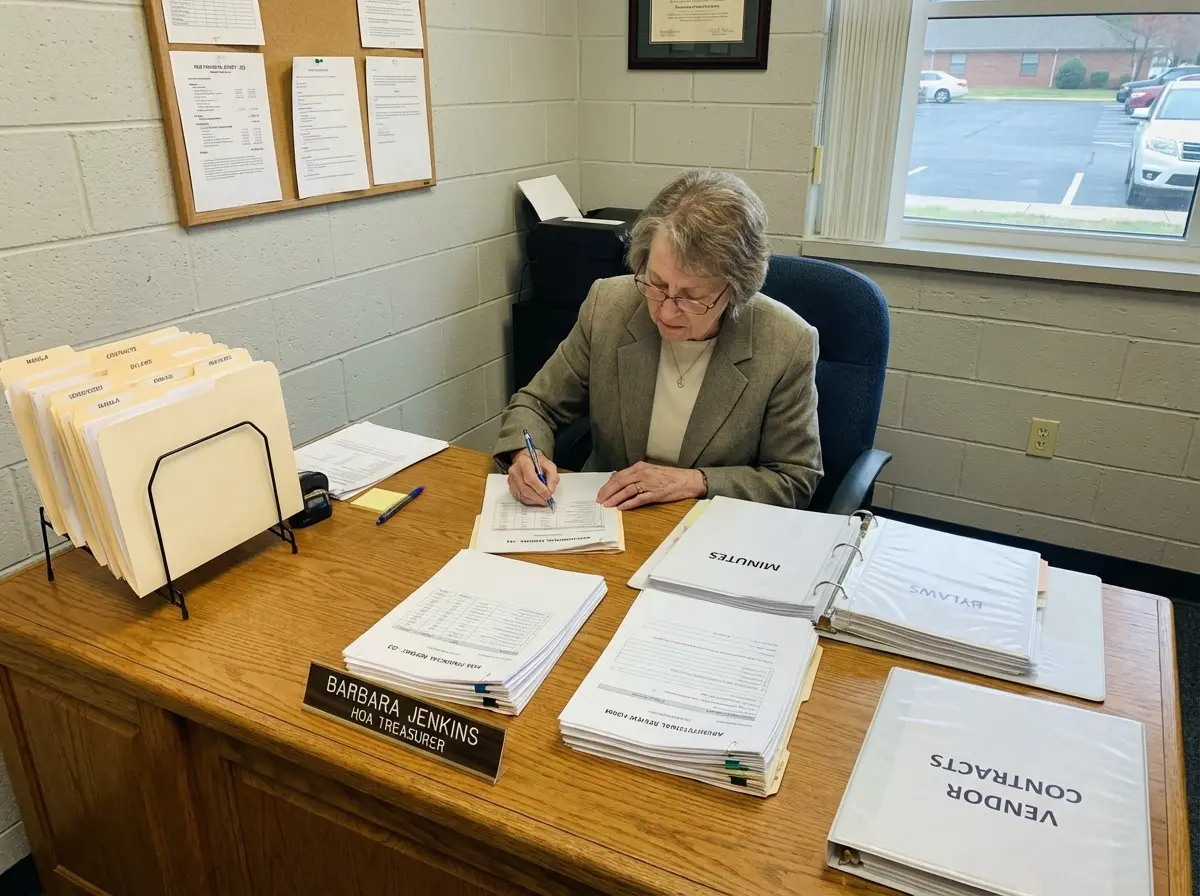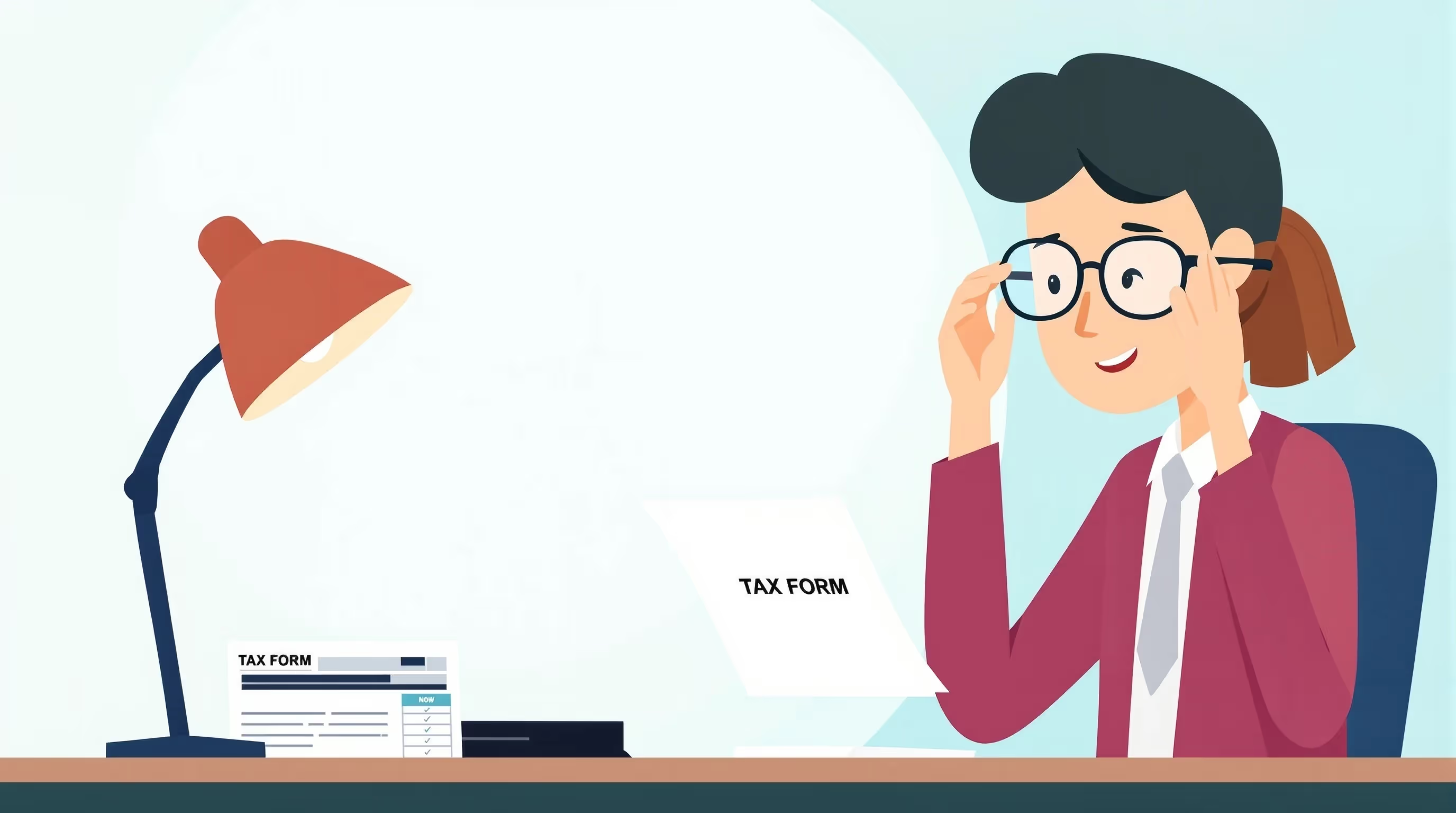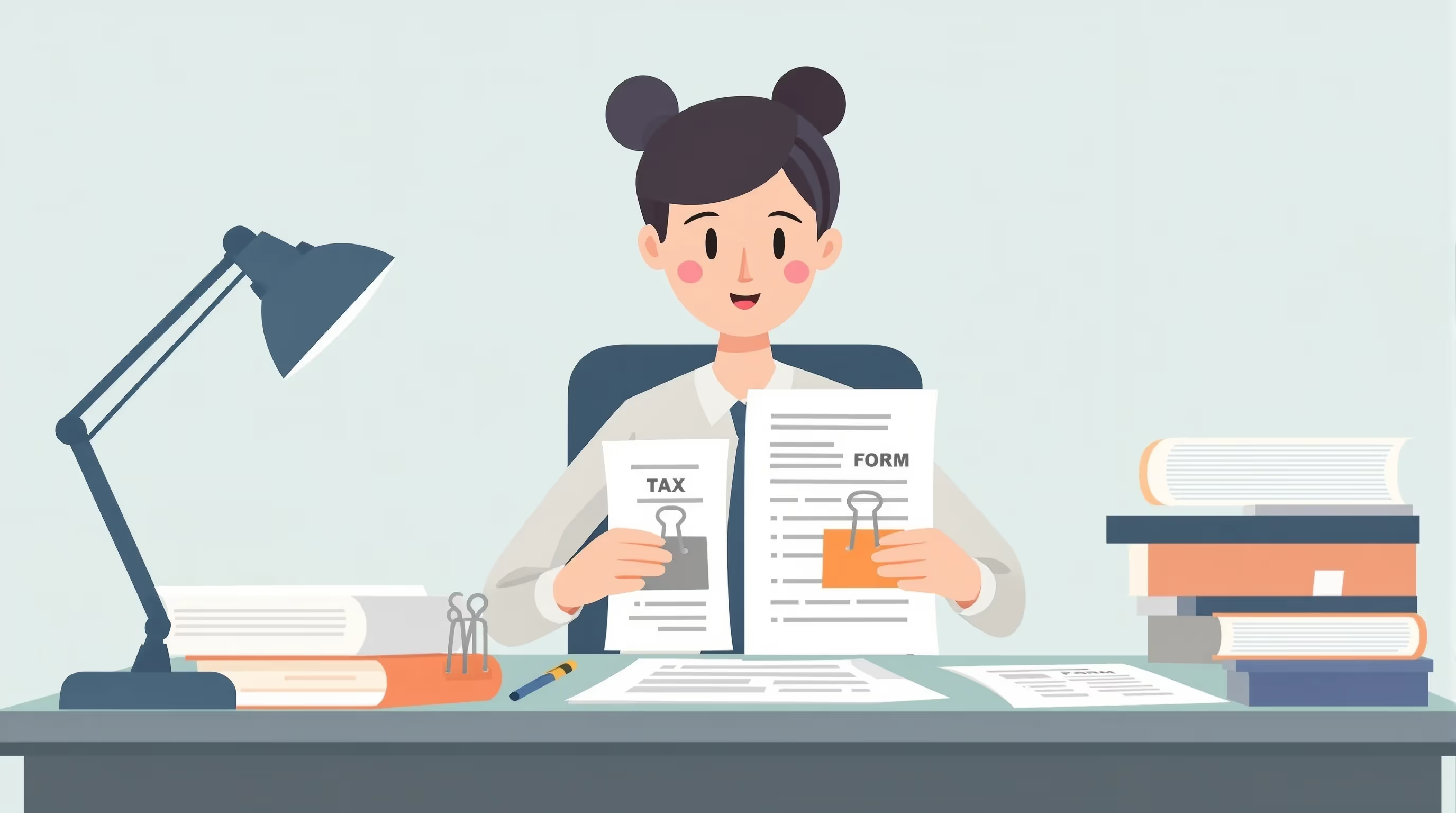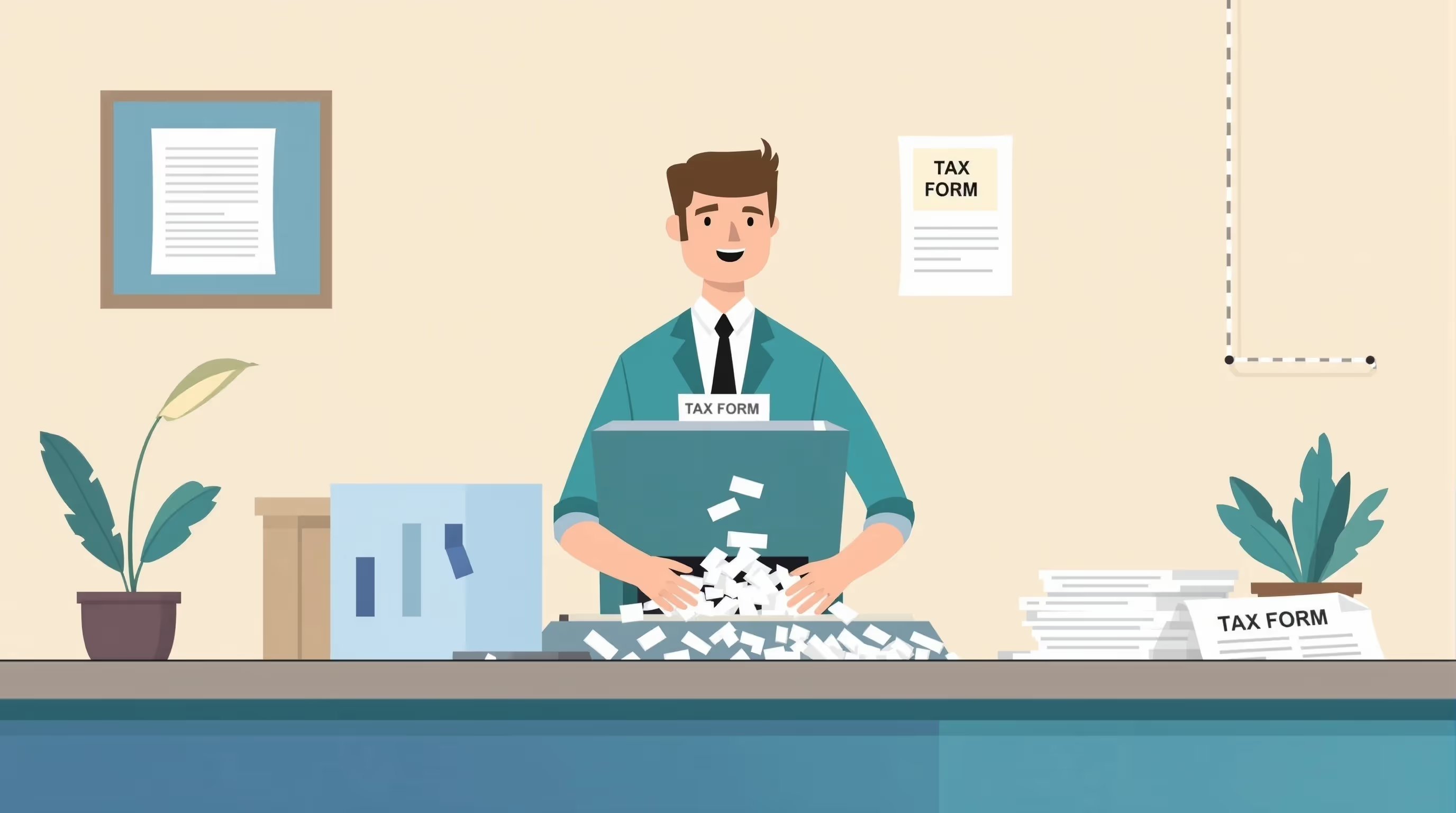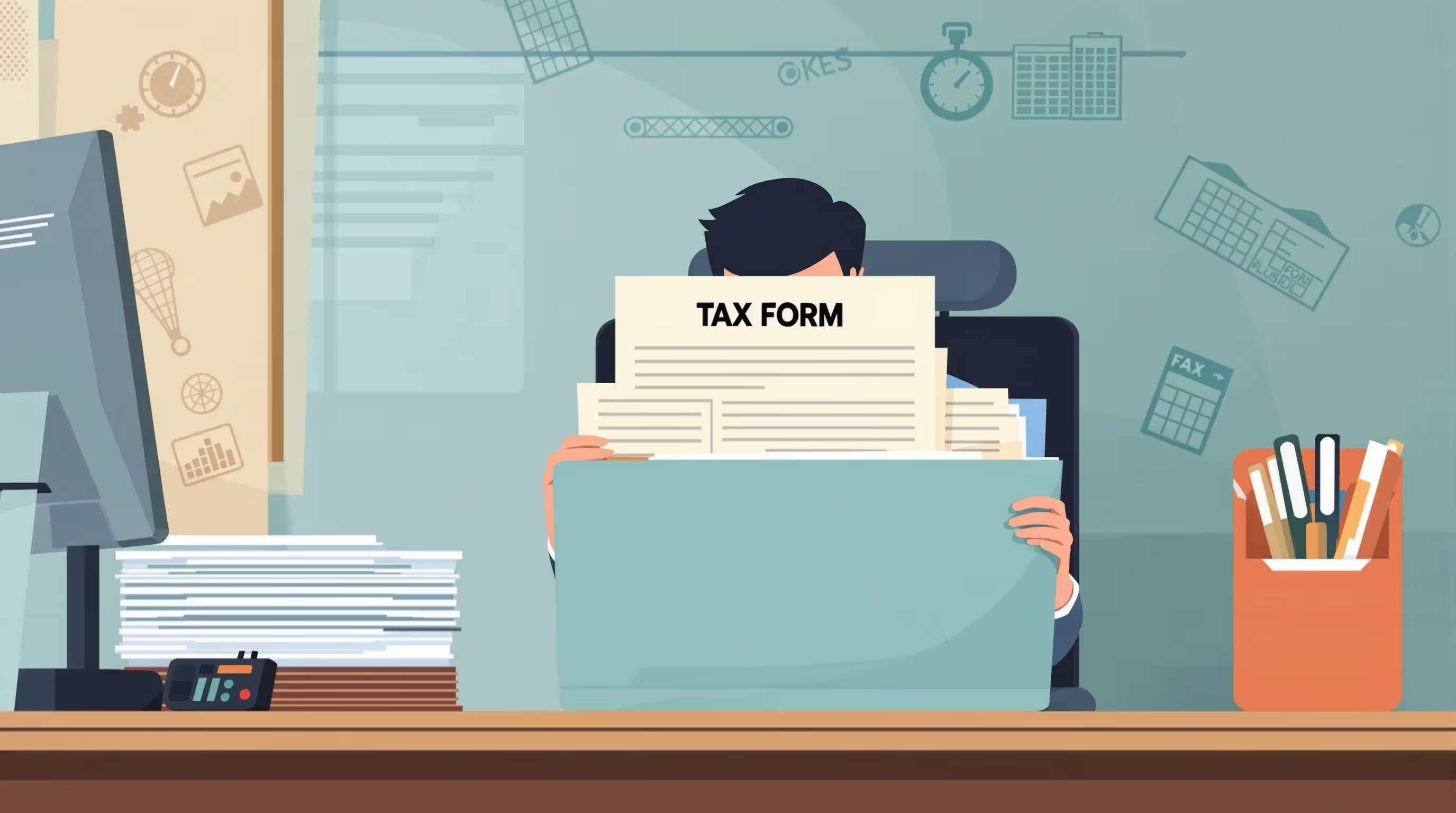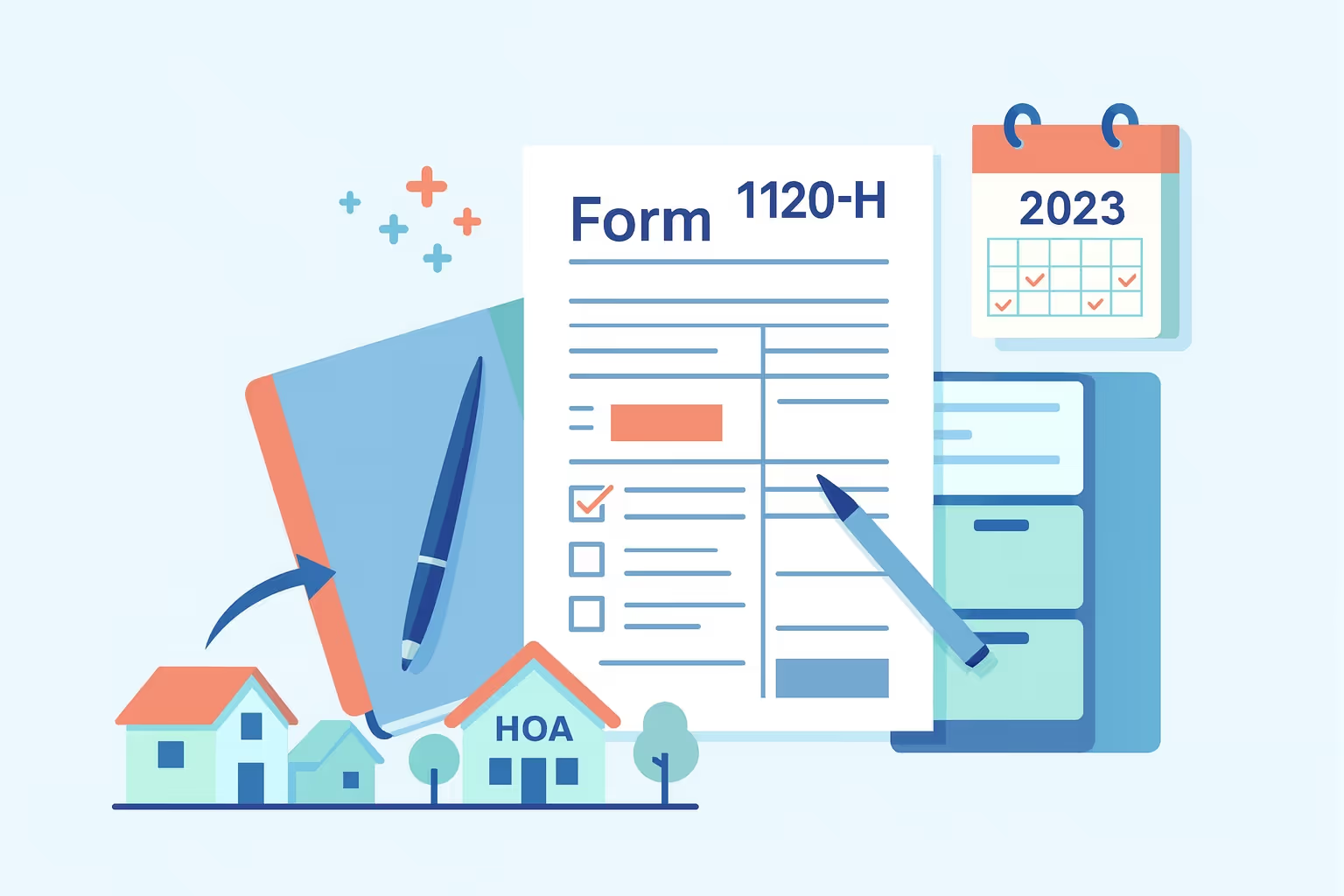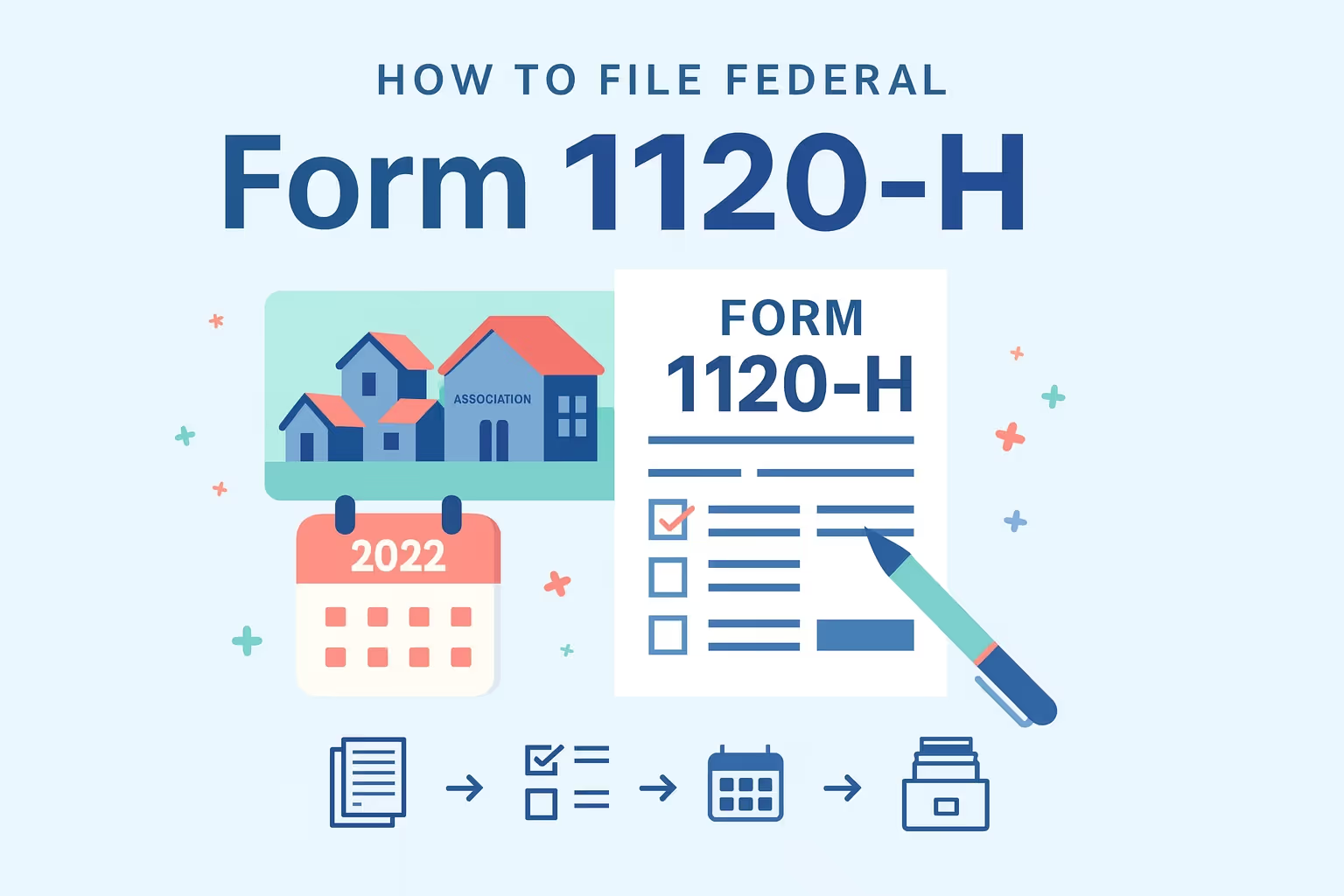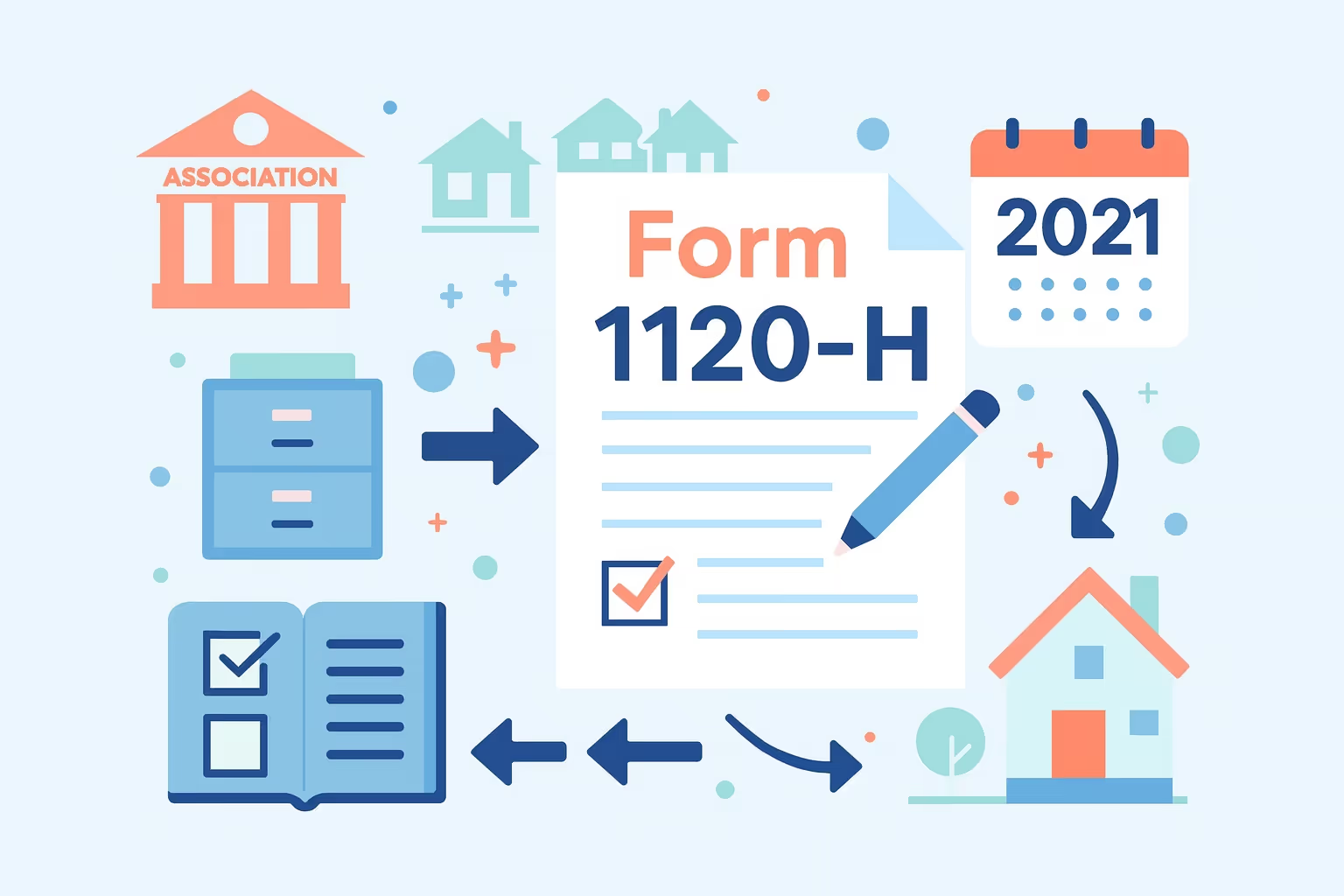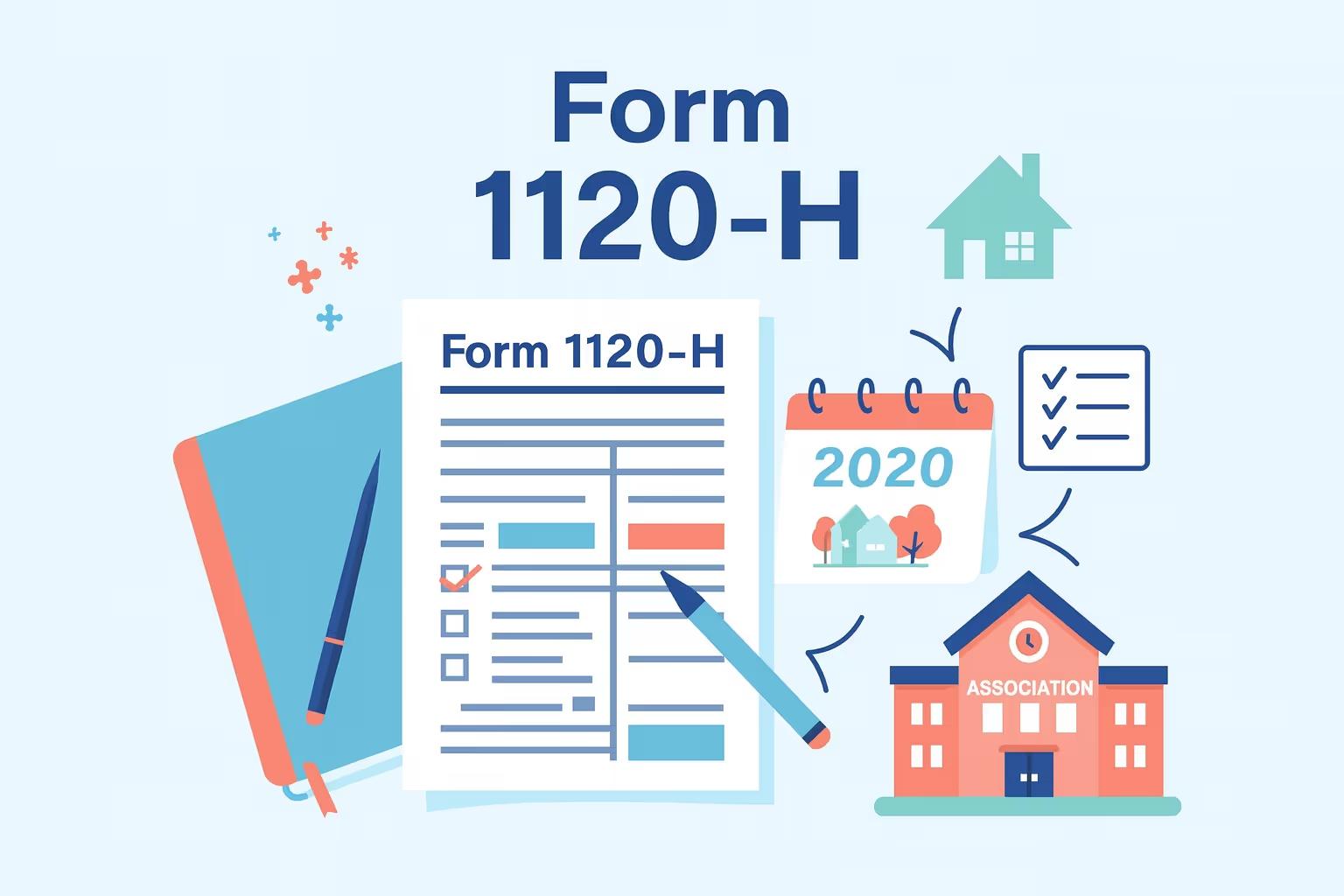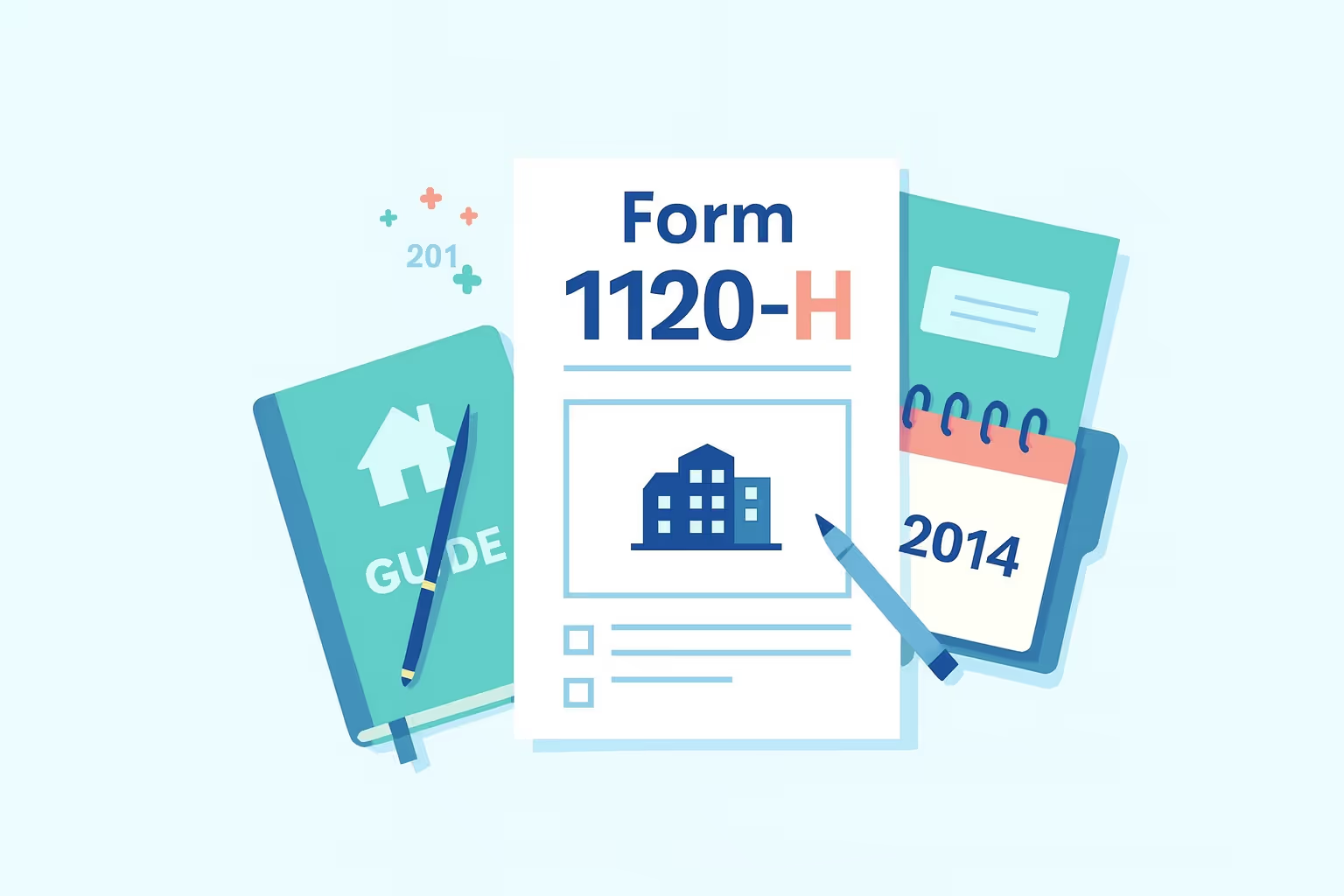
Filing an accurate income tax return is a crucial responsibility for homeowners' associations that aim to comply with federal tax law. Form 1120-H serves as a corporation income tax return designed specifically for qualifying condominium associations, residential real estate associations, and timeshare associations. It allows these entities to claim certain tax benefits under Section 528 of the Internal Revenue Code by reporting income in a simplified format while maintaining eligibility for tax-exempt treatment.
For the 2010 tax year, Form 1120-H provides a streamlined method to calculate tax liability using a flat tax rate. This approach benefits associations that receive income primarily from exempt function activities, such as membership dues, fees, and assessments collected to maintain common property and residential units. When filed correctly, the election ensures that exempt function income consists solely of revenue tied to community operations rather than commercial ventures or unrelated services.
According to the IRS Instructions for Form 1120-H (2010), associations that meet the Section 528 criteria may exclude exempt function income from taxable income, which helps reduce filing and recordkeeping work and improve compliance accuracy. Understanding these provisions helps associations evaluate filing status, confirm eligibility, and organize financial records before completing the corporation income tax return.
Understanding Eligibility and Filing Requirements
Homeowners’ associations that want to file Form 1120-H must first confirm their qualification under Section 528 of the Internal Revenue Code. This election allows organizations such as condominium associations, residential real estate associations, and timeshare associations to file a specialized corporation income tax return.
To maintain compliance, each association must satisfy specific eligibility tests verifying income sources, expenditure purposes, and organizational structure. These criteria ensure that tax-exempt treatment applies only to entities focused on community property management and association services.
To qualify for Section 528 benefits, associations must primarily generate exempt function income, which consists of membership dues, assessments, and fees collected from association members. This revenue supports the maintenance and improvement of shared property, common areas, and residential units. Associations must also demonstrate that their operational expenses align with property care and community administration, confirming that financial activities directly serve the shared interests of members.
- 60% Gross Income Test: At least 60% of the association’s gross income must derive from exempt function income, including membership fees and regular assessments. Income from external commercial activities or unrelated investments is considered nonexempt and cannot contribute toward this percentage.
- 90% Expenditure Test: A minimum of 90% of the association’s total expenditures must relate to exempt function expenses, such as property maintenance, landscaping, repairs, and administrative costs tied to association services.
- No Private Shareholder Benefit: The association cannot distribute net earnings to any private shareholder or individual. All net income must be used to support community property management, maintenance, or improvements, which are necessary to preserve the tax-exempt status.
- Election by Filing Form 1120-H: Filing Form 1120-H each year constitutes the election under Section 528. Associations must file an annual report to maintain eligibility for this treatment.
Meeting these requirements confirms that an organization’s financial structure and expenditures align with federal tax regulations for homeowners' associations. Entities failing either test must file a standard corporate return using Form 1120, which follows different tax rules and limits certain tax benefits. Establishing compliance before filing ensures accurate reporting, eligibility for Section 528 treatment, and adherence to the Internal Revenue Code's intent.
Preparing to File: Records and Documentation
Before completing Form 1120-H, every homeowners' association must compile accurate financial data and supporting records. Well-organized documentation helps ensure that exempt function income, nonexempt function income, and deductible expenses are reported correctly under Section 528 of the Internal Revenue Code.
A thorough filing package supports transparency, reduces audit risk, and reinforces eligibility for certain tax benefits tied to the association’s operations and property management responsibilities.
Essential Records for HOA Tax Compliance
- Employer Identification Number (EIN): A valid EIN is required for every corporation's income tax return. It identifies the association as a separate legal entity and links its tax filings with the Internal Revenue Service.
- Bank Accounts and Financial Statements: Collect all bank statements that show deposits, withdrawals, and interest income. Reconcile these accounts with internal ledgers to confirm an accurate representation of association income.
- Assessment and Dues Records: Maintain detailed schedules showing membership dues, assessments, and excess membership dues collected from members. These records support the calculation of exempt function income and demonstrate compliance with the 60% gross income test.
- Invoices and Receipts: Keep itemized receipts for property maintenance, landscaping, management services, and capital expenditures. These documents substantiate deductible expenses and confirm that at least 90% of the association’s total expenditures support exempt functions.
- Expense Summaries: Compile detailed listings of the association’s expenses, including accounting fees, insurance premiums, and real estate taxes. Each entry should be traceable to a supporting invoice or payment record.
- Investment and Loan Documents: Retain all evidence of investment activity, including statements showing capital gains, dividends, or tax-exempt interest received. For associations holding loans, include payment histories showing both interest and principal payments.
- Prior-Year Tax Returns: Reference past filings to ensure consistency across reporting periods. The association should document any changes in filing status, income, or expense classifications.
- Professional Service Records: Maintain contracts and invoices from a qualified tax professional who prepared or reviewed the return. Documenting professional support demonstrates diligence and adherence to tax law.
IRS guidance on recordkeeping requirements outlines the retention period for records and supporting schedules associated with filings. Adhering to these retention guidelines helps safeguard against compliance issues and ensures readiness during an IRS examination. Comprehensive documentation improves reporting accuracy, supports Section 528 eligibility, and reinforces confidence in the association’s financial integrity.
Step-by-Step Walkthrough to File Form 1120-H
Filing Form 1120-H requires precision and a thorough understanding of the association’s financial structure. Each section must accurately present income, expenditures, and tax liability to ensure compliance under Section 528 of the Internal Revenue Code.
A structured approach helps homeowners' associations report exempt, nonexempt, and deductible expenses with clarity and accuracy. The process outlined below details every completion stage, from identification to final review, ensuring eligibility for tax-exempt treatment and applying the flat tax rate under this filing method.
Step 1: Verify Association Details
Start with the header section, which identifies the homeowners' association as the filing entity. Enter the full legal name, Employer Identification Number (EIN), and mailing address exactly as they appear on prior filings. Include the date of formation and the tax year ending date, and check the box that matches the association type: condominium, residential real estate, or timeshare. Confirm all identifying information matches prior corporation income tax return filings to avoid processing delays.
Step 2: Determine Filing Status
Select the proper filing status on Form 1120-H to ensure accurate classification. Associations must confirm that they meet the requirements under Section 528, including the 60% gross income test and the 90% expenditure test. The filing status reflects whether the organization qualifies as a condominium management association, residential real estate association, or timeshare association. Accuracy at this stage ensures proper application of tax law and preserves the election’s validity.
Step 3: Report Income
Complete lines 1 through 8 by reporting only nonexempt function income, which includes interest income, rental income, capital gains, and other earnings not tied to association members. Exempt function income, such as membership dues or assessments, is excluded from taxable income. Ensure each figure reflects the association’s gross income from taxable sources only, verified through bank statements, investment records, and accounting ledgers.
Step 4: Enter Deductions
On lines 9 through 18, list deductible expenses directly connected to taxable income. Include costs such as accounting fees, management service fees, and state income taxes related to nonexempt function income. Exclude expenditures paid with exempt funds, as they do not qualify for deduction. Attach receipts and invoices to substantiate entries, ensure compliance, and support accurate net earnings calculations.
Step 5: Apply the Specific Deduction
Reduce taxable income by the $100 specific deduction allowed under Section 528. This adjustment lowers the amount subject to the flat tax rate, aligning the calculation with current IRS standards. Ensure the deduction appears on the correct line and that the supporting documentation accurately reflects the source and purpose of the taxable income.
Step 6: Calculate Tax Liability
Multiply the adjusted taxable income by the applicable flat tax rate. Use 30% for condominium management associations and residential real estate associations, or 32% for timeshare associations. The resulting figure represents the total tax due before considering any estimated tax payments or credits. Associations should review all computations to ensure accuracy and completeness.
Step 7: Account for Tax Credits and Payments
Enter any estimated tax payments, prior-year overpayments applied to this return, or credits from federal tax paid. Include amounts paid through electronic transfers or third-party processors. Verify each payment date and amount against financial records to prevent discrepancies in total deductions and tax computation.
Step 8: Finalize and Review the Form
Review all entries for consistency, completeness, and proper classification. Ensure that income and expenses align with supporting documentation and that totals reconcile with financial statements. Have an authorized officer sign and date the return before mailing it to the appropriate IRS service center.
Associations can access the official IRS Form 1120-H to complete each step accurately and confirm the version matches the current filing format. A final review before submission ensures compliance with Section 528, prevents costly corrections, and supports eligibility for tax-exempt treatment in future years. Proper documentation and attention to detail help associations demonstrate compliance and maintain transparent reporting.
Exempt Income and Nonexempt Income Explained
Understanding the distinction between exempt function income and nonexempt function income is crucial for homeowners' associations filing Form 1120-H. Each classification affects how the Internal Revenue Code treats the association’s income and determines the organization’s overall tax liability. Properly categorizing income sources helps preserve the association’s tax-exempt status under Section 528 while ensuring accurate reporting on the corporation's income tax return.
The table below summarizes the differences between exempt and nonexempt income types. Each entry highlights familiar sources and their connection to the association’s operations, allowing filers to identify taxable versus nontaxable revenue with greater confidence. Associations should maintain clear financial records to support each category, ensuring that the total aligns with the association’s gross income and expenditures.
Exempt Function Income vs. Nonexempt Function Income
Exempt Function Income includes sources directly tied to the association’s core, exempt activities:
- Membership dues and fees paid by association members
- Assessments for maintaining shared property and residential units
- Charges supporting community operations or association services
- Contributions tied to common property improvements
- Payments linked to exempt function expenses, such as landscaping or repairs
Nonexempt Function Income covers revenue earned from activities outside the exempt purpose:
- Interest income from bank accounts and investments
- Rental income received from non-members
- Capital gains from investment sales or asset transfers
- Dividends from taxable securities or mutual funds
- Fees collected for the commercial use of facilities
Associations must ensure that exempt function income consists solely of amounts collected from members for community purposes. Revenue from unrelated activities or non-member transactions is considered nonexempt function income and is therefore federally taxable. Keeping separate accounts for these two categories strengthens accuracy and reduces confusion during annual filing. Proper classification supports transparency and reinforces compliance with federal reporting standards.
Accurate income classification directly influences the calculation of taxable net income and deductible expenses. Only nonexempt function income should appear on the taxable income lines of Form 1120-H, while exempt income remains excluded. Misreporting income types can affect the 60% gross income test and jeopardize eligibility under Section 528. Maintaining clarity in reporting ensures adherence to IRS regulations and preserves eligibility for favorable tax treatment.
Condominium Management Association Property and Activities
Condominium management associations operate under the provisions of the Internal Revenue Code, which define how property use, activities, and expenditures align with tax-exempt purposes. These organizations are responsible for managing shared spaces, maintaining residential units, and overseeing community assets for association members.
Their financial decisions and expenditures directly influence eligibility for the Section 528 election, which provides access to specific tax benefits by filing Form 1120-H. Effective management of property and operations ensures compliance with IRS regulations and supports accurate reporting of association income and expenses.
Each qualifying activity must serve an exempt purpose and benefit the entire community rather than individual members. Associations that limit their operations to maintaining and improving shared property strengthen their compliance position when calculating net income and deductible expenses.
Activities unrelated to property management may generate nonexempt function income, which must be reported separately to preserve the integrity of the filing. The list below outlines standard property-related functions and costs that typically qualify as exempt function expenses under federal tax law.
Qualifying Activities and Expenses
- Maintenance of Common Areas: This includes landscaping, snow removal, and repair of shared amenities that benefit all association members.
- Upkeep of Residential Units: Covers roof repairs, structural maintenance, and exterior painting for community buildings classified as residential units.
- Property Management Services: Involves administrative oversight, accounting fees, and vendor coordination necessary to sustain ongoing association services.
- Payment of Real Estate Taxes: Reflects taxes paid on common property and facilities owned collectively by the association.
- Capital Improvements: Include capital expenditures for upgrades or new installations that enhance long-term property value and functionality.
- Insurance and Utilities: Encompasses coverage for property damage, liability protection, and shared utility costs related to community assets.
- Compliance and Professional Fees: These represent the costs associated with adhering to tax laws and reporting obligations, including legal, auditing, and consulting expenses.
Associations should document all activities and expenses thoroughly to demonstrate how each supports the exempt purpose defined under Section 528. Maintaining detailed records of property management functions confirms that association income aligns with federal requirements for tax-exempt treatment.
This level of diligence strengthens eligibility for the flat tax rate, supports accurate classification of expenditures, and helps safeguard the organization’s standing under IRS regulations.
Estimated Tax Payments, Tax Liability, and Deadlines
Homeowners’ associations filing Form 1120-H must follow federal requirements when calculating tax liability and submitting payments. Understanding due dates, electronic filing obligations, and estimated tax rules ensures that associations maintain compliance with IRS regulations.
Each payment type—whether a regular remittance, estimated installment, or adjustment—affects how tax paid is applied to the current filing period. Proper scheduling and documentation help prevent interest charges and preserve eligibility for the Section 528 election.
Payment Requirements and Deadlines
- Due Date for Tax Payment: Associations using a calendar tax year must pay any balance due by March 15 of the following year. For fiscal-year entities, the due date falls on the 15th day of the third month after the close of the tax year. Timely payments safeguard compliance and reduce the likelihood of additional assessments.
- Electronic Payment Method: All associations must submit federal tax payments through electronic transfers. Payments should be scheduled in advance to allow sufficient processing time before the due date. Associations using paper checks risk delays or rejections under current IRS regulations.
- Electronic Federal Tax Payment System (EFTPS): The IRS requires payments to be made through EFTPS, an online platform that records each transaction in real-time. Users must initiate transfers by 8:00 p.m. Eastern Time on the business day preceding the due date to ensure timely receipt.
- Estimated Tax Payments: Associations with substantial tax liabilities may need to make estimated tax payments throughout the year. These payments offset total deductions at year-end, minimizing the risk of underpayment. The need for installments depends on the size and consistency of taxable income across reporting periods.
- Adjustments for Net Operating Loss: Any prior-year net operating loss may offset current taxable income if permitted under federal tax law. Associations must attach supporting schedules showing how the loss was calculated and applied.
- Credits and Refunds: If federal tax paid exceeds liability, the association may request a refund or apply the overpayment to the following year’s estimated taxes. Proper documentation of payment sources ensures accurate credit processing.
- Extension Requests: Associations unable to complete Form 1120-H on time may file Form 7004 to request an automatic extension of time to file. The extension applies to filing, not payment, so all taxes must still be paid by the original due date.
Monitoring payment activity and maintaining accurate records throughout the year helps associations comply with the Internal Revenue Code. Reviewing payment confirmations, bank transfers, and supporting schedules helps verify that all deposits align with calculated tax liability. Consistent adherence to deadlines and reporting standards demonstrates diligence and preserves eligibility under Section 528.
Common Mistakes and Filing Tips
Homeowners’ associations preparing Form 1120-H often encounter recurring issues that affect filing accuracy, eligibility for Section 528 treatment, and overall compliance. Many of these errors stem from misclassification of income, incomplete documentation, or failure to meet specific filing requirements.
Identifying these problems early helps prevent delays, audits, and unnecessary tax liability. The following list outlines common mistakes and provides practical guidance to ensure a correct and timely submission of corporate income tax returns.
Frequent Errors and Practical Solutions
- Misclassifying Income Sources: Associations frequently mix exempt function income with taxable nonexempt function income. To avoid inaccuracies, maintain separate accounts and ledgers for each category. Only nonexempt income, such as interest income or capital gains, should appear in taxable income calculations.
- Incorrect Filing Status: Choosing the wrong filing status can alter the applicable flat tax rate and jeopardize Section 528 eligibility. Associations must confirm whether they qualify as a condominium management association, residential real estate association, or timeshare association before filing.
- Omitting Deductible Expenses: Some associations fail to include allowable deductible expenses related to generating taxable income. Ensure that accounting fees, legal costs, and other direct expenses tied to nonexempt income are fully reported. Expenses covered with exempt function income cannot be deducted under IRS regulations.
- Late Filing or Payment: Filing after the deadline or delaying tax payment can lead to additional assessments. Associations should mark due dates in advance and confirm that electronic payments are processed through EFTPS on time.
- Missing or Incorrect Signatures: Every Form 1120-H must include the signature of an authorized officer, such as a president, treasurer, or vice president. Missing or unauthorized signatures render the return incomplete and may cause delays in processing.
- Insufficient Documentation: Unsupported entries increase the risk of audit or disallowance. Associations should maintain comprehensive records that cover income sources, deductible expenses, and taxes paid. Detailed schedules for the association’s total expenditures strengthen compliance with the Internal Revenue Code.
- Failure to Consult a Tax Professional: Complex associations with multiple income streams or evolving operations benefit from expert guidance. A qualified tax professional ensures that income classifications, filing status, and deductions comply with federal tax law.
- Ignoring State Requirements: State income taxes may apply even when federal income is exempt. Associations should verify local filing obligations to ensure complete compliance at both levels.
Avoiding these errors reinforces accuracy and protects eligibility for favorable tax treatment. Associations that implement review procedures, track filing deadlines, and consult professionals when needed are better positioned to maintain compliance. Attention to detail in every stage of preparation reflects organizational diligence and preserves the integrity of financial reporting under Section 528.
Frequently Asked Questions
What is exempt function income for homeowners' associations?
Exempt function income refers to funds collected from association members through dues, assessments, and fees that support community operations. These amounts are excluded from taxable income when filing IRS Form 1120-H because they serve a common benefit, such as property maintenance or management. To maintain eligibility under Section 528, homeowners’ associations must ensure that exempt function income is used exclusively for shared expenses, not personal or commercial purposes that generate taxable revenue.
How does nonexempt function income affect HOA tax filings?
Nonexempt function income includes revenue from sources unrelated to member assessments, such as rental income from non-members, interest on bank deposits, or capital gains from investments. This income must be reported as taxable on IRS Form 1120-H. Failing to classify it correctly can increase audit risk and affect an association’s tax liability. Keeping separate accounts for exempt and nonexempt function income supports accurate reporting and compliance with federal tax requirements.
Which tax forms should homeowners' associations use when filing?
Most homeowners’ associations file IRS Form 1120-H to take advantage of Section 528 benefits available to tax-exempt organizations. Associations that fail to meet the eligibility requirements must use Form 1120, the standard corporate income tax return. Choosing the correct tax form depends on whether most HOA income is exempt or nonexempt. Form 1120-H simplifies reporting for qualified entities and applies a flat tax rate to taxable income derived from nonexempt activities.
When must an association pay tax on its income?
Associations must pay tax only on their taxable net income, which generally comes from nonexempt function income such as investment returns or rental fees. Exempt function income remains excluded because it serves the common benefit of members. Payment is due by the 15th day of the third month after the close of the tax year. Timely filing and payment help preserve eligibility for the Section 528 election and prevent administrative complications.
Are homeowners' associations considered tax-exempt organizations?
Homeowners' associations are not automatically classified as tax-exempt organizations under federal law. Instead, they may elect tax-exempt treatment annually by filing IRS Form 1120-H, provided they meet specific income and expenditure requirements. To qualify, at least 60% of function income must be exempt, and at least 90% of total expenditures must support property management and maintenance. Filing each year establishes eligibility for favorable treatment under Section 528.
Where can associations find reliable filing guidance online?
The IRS website offers official resources to assist associations in completing their annual filings accurately. It provides downloadable tax forms, detailed filing guidance, and current guidance on functional income classification and payment procedures. Associations should rely on these materials to confirm reporting requirements and eligibility rules. Consulting authoritative federal resources ensures compliance and reduces errors when calculating taxable income, deductible expenses, and total taxes owed under Section 528.
How should associations handle mixed sources of HOA income?
Associations earning both exempt and nonexempt function income must track each category separately to maintain accuracy. Exempt income, such as membership dues or assessments, supports community operations and is therefore exempt from taxation. Nonexempt income, including interest or rental payments, is subject to taxation. Allocating revenues correctly across accounts ensures proper reporting, preserves eligibility for the Section 528 election, and reduces potential disputes during IRS review of tax filings.






